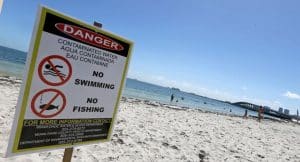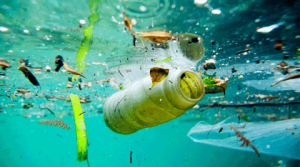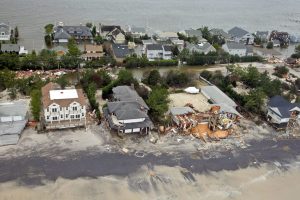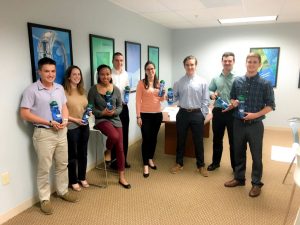On a warm summer day, nothing feels quite as nice as a refreshing dip in the water. Until the water is contaminated, that is. In the past year, nearly 60 percent of the 4,500 tested beaches across the country had water pollution levels (on at least one occasion) that put swimmers at risk of getting sick. Well over 2,000 beaches surpassed the EPA’s margin of safety. Polluted waters can lead to a variety of stomach and respiratory illnesses in swimmers, and ultimately cause an estimated 57 million cases of waterborne illnesses every year.
According to the EPA’s most recent Water Quality Assessment data, fecal matter from sewage overflows and stormwater runoff in highly settled areas are the two of the largest causes of waterway contamination.

Stormwater
Stormwater flowing over both suburban and urban areas pick up fecal matter from pets and wildlife along the way. This waste carries bacteria which leads to illnesses. The Centers for Disease Control and Prevention (CDC) reported that from 2000 to 2014, 140 outbreaks caused by recreational water contamination caused nearly 5,000 illnesses and two deaths. Consuming seafood harvested from contaminated waters can also cause an equally harmful health threat. In addition, studies in California show that swimmers directly in the flow of storm drains are 50% more likely to develop an illness than those who are just 400 more yards away from the same drainage flow.
Sewage Overflows
The EPA estimated that 850 billion gallons of untreated water were released into waterways as a result of sewage overflows. Sewage contamination contains human waste comprised of bacteria, viruses, and parasites capable of causing diseases.
The Effects of Fecal Contamination
Data from the 2018 National Water Quality Monitoring Councils’ Water Quality Portal showed staggering levels of contaminants from stormwater runoff and sewage overflows. Approximately 58 percent of beach sites tested in 29 coastal and Great Lakes states had unsafe levels of fecal contamination for swimming on at least one day.
Tested sites were unsafe if bacteria levels exceeded the EPA’s ‘Beach Action Value.’ These levels were reached in every region of the country.
- Gulf Coast Beaches – 329 sites (85 percent of the 385 sites tested) were unsafe for at least one day
- West Coast Beaches – 573 sites (67 percent of the 850 sites tested) were unsafe for at least one day
- East Coast Beaches – 1,134 sites (48 percent of the 2,373 sites tested) were unsafe for at least one day
- Great Lake Beaches – 418 sites (75 percent of the 558 sites tested) were unsafe for at least one day
Keeping our waterways clean, especially during the summer months, is critical. Luckily, we can all help reduce the number of contaminants reaching our favorite beaches and swimming holes.
Here are some helpful tips to stay safe at the beach this summer by preventing water pollution:
Prevent Urban Runoff Pollution
- Advocate for natural and green infrastructure that prevent bacteria-laden pollution, such as rain barrels, permeable pavement, urban greenspace, and green roofs.
- Protect and restore natural infrastructure such as wetlands that can filter bacteria, sediments, and nutrients.
- Wash your car at a commercial car wash, or on an unpaved surface so the excess water can be absorbed by the ground.
- Keep yard clippings out of the street. Sweep driveways and yards instead of hosing them down and letting residual materials flow into the storm drains.
- Clean up oil spills and fix leaking automobiles.

Prevent Sewage Pollution
- Advocate for public investments in fixing aging sewer systems.
- Advocate for upgrade or relocation of wastewater facilities that are in danger of overflowing during storms and floods.
- Ensure frequent inspections and proper maintenance of residential septic systems.
Prevent Manure Pollution
- Help design best practices for reducing manure pollution from cropland, including the maintenance of conservation buffers set up around fields.
- Encourage livestock operations to raise animals on rotational pastures.
Will you be able to put these into effect in efforts to stop stormwater pollution? What else are you doing to keep our waterways clean?


